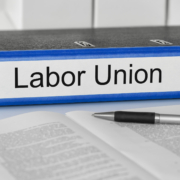What Employers Can Do to Stay Union-Free in Today’s Workplace
A union-free workplace doesn’t happen by accident. It requires consistent attention to employee needs, clear communication, and leadership that takes initiative before problems escalate. In today’s labor environment, unions are increasingly aggressive in their campaigns. Social media, economic uncertainty, and ongoing public discussion about workers’ rights have all contributed to a more union-curious workforce. If you’re a business owner or executive who wants to avoid unionization while keeping morale high, the first step is understanding that silence creates suspicion. Employees who feel ignored, overworked, or undervalued are more likely to listen to a third party promising to be their voice. The most effective union avoidance plans focus on doing the work before a union has a chance to plant roots.
The foundation of a union-free environment starts with trust. That trust is built when leadership engages with workers honestly and consistently. If employees are only hearing from upper management when something goes wrong or when profits are on the line, they’ll see through the concern as self-serving. That’s when a union message becomes more appealing. Building trust takes more than a quarterly town hall or an anonymous suggestion box. It’s about face-to-face conversations, real solutions, and the willingness to listen even when the feedback stings. Employers who make themselves available and approachable are often the ones who never face a serious organizing campaign.
Another key piece of staying union-free is training your supervisors to recognize warning signs. Your front-line managers are the first to hear about brewing frustrations or organizing talk, but many aren’t trained on what they’re allowed to say or do under federal labor laws. That lack of knowledge can turn a small issue into a major legal liability or, worse, hand the union an advantage. Employers must invest in labor law training and ensure their team knows how to spot subtle changes in employee behavior, who to report concerns to, and how to respond in a way that’s both effective and legal. Failing to do so can result in unfair labor practice charges that damage the company’s reputation and feed into the union’s messaging.
Compensation and benefits also play a major role. That doesn’t mean you have to match what a union would promise in theory. What matters more is fairness and transparency. Are employees paid competitively? Do they understand how raises are determined? Are benefits communicated clearly? When workers don’t understand how decisions are made, they assume they’re being taken advantage of. A union promises clarity and control—even if it can’t actually deliver either. Employers who explain their compensation strategy and invite feedback stand a better chance of earning employee loyalty.
But there’s one point that often gets ignored in these conversations: discipline. A heavy-handed approach to discipline is one of the fastest ways to push employees toward organizing. If workers feel like policies are unclear or enforced unevenly, resentment will build. That’s the opening union organizers look for. On the other hand, when a company has a clear disciplinary policy, applies it fairly, and gives employees a chance to be heard, it demonstrates respect—and that can go further than any policy manual or wage increase.
Ultimately, avoiding a union isn’t just about stopping a campaign; it’s about making one unnecessary. The most successful companies we’ve worked with don’t rely on fear or intimidation. They rely on culture, communication, and accountability. They know that preventing unionization isn’t a battle—it’s a strategy. One built on the idea that when people feel heard and respected, they don’t go looking for outside representation. Union-free isn’t just a legal status—it’s a reflection of how your workforce feels about your leadership. If that’s where you start, you’ll likely never face a union vote at all.
Union-Free Workplace FAQs
What does it mean to be a union-free workplace?
A union-free workplace is one where employees have chosen not to be represented by a labor union. This means all employment decisions are handled directly between the employer and employees, without the involvement of a third-party bargaining agent.
Why do some businesses want to avoid unionization?
Many companies prefer to stay union-free because it allows them to maintain flexibility in operations, manage costs more effectively, and respond to employee needs without the delay or formality of contract negotiations. Union contracts can limit a company’s ability to adapt quickly, especially in industries where change is constant.
Is it legal for employers to discourage unionization?
Yes, employers are legally allowed to express their opinion about unions, share facts, and encourage employees to remain union-free—as long as they do not threaten, interrogate, promise benefits, or spy on workers. These activities are protected under federal law.
What’s the biggest mistake companies make when trying to avoid a union?
Waiting too long to act. Many employers only start addressing issues after union organizers are already involved. By then, it’s often too late. The key is being proactive—addressing concerns before they turn into grievances and building a culture where a union feels unnecessary.
How can I tell if a union campaign is starting at my company?
Some early signs include sudden changes in employee behavior, offsite meetings, new leaders emerging among the workforce, increased talk about fairness or rights, and requests for detailed company policies. If your supervisors are trained to recognize these signals, you can act early and legally to address the concerns behind the movement.
What are the consequences if a union forms at my business?
Once a union is certified, you’re required by law to bargain in good faith over wages, hours, and working conditions. That process can be time-consuming and expensive. You may also face operational restrictions and increased scrutiny from the National Labor Relations Board (NLRB).
Can a company go back to being union-free after unionization?
It is possible, but it’s a long and complex process. The better strategy is to prevent the union from gaining a foothold in the first place by addressing employee concerns head-on and demonstrating why a union isn’t necessary.
Call Labor Advisors LLC For a Free Consultation
If you’re a business owner or executive concerned about union activity in your workplace, don’t wait until it’s too late. At Labor Advisors LLC, we help employers build the kind of workplace where unions aren’t needed. We understand the risks, the laws, and most importantly—the solutions that work. Our team of labor consultants brings real-world experience to every industry, and we offer free consultations to help you take control of the conversation before a union takes control of your workforce.
Call us now at 1-833-4-LABOR-4 (1-833-452-2674) to schedule your confidential consultation. Let’s build a stronger, union-free future for your business.






